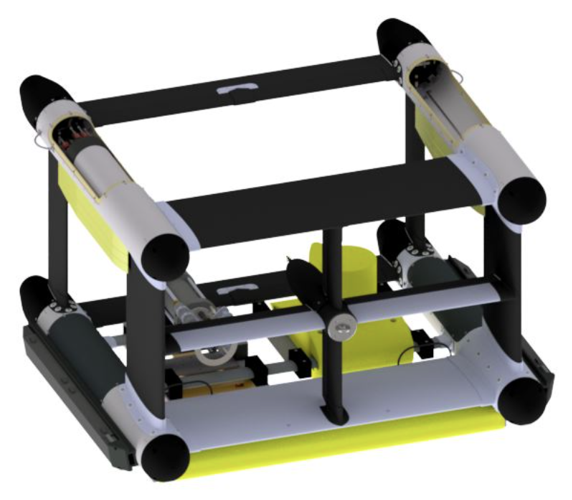Focus 3 Underwater Vehicle – Part of the Digital Ocean Lab's Advanced Survey Systems
The MacArtney Focus 3 Underwater Vehicle, operated within the Digital Ocean Lab, is equipped with a unique, comprehensive suite of high-resolution sensors. Designed to meet the most demanding requirements of underwater research, monitoring and inspection, the system reflects the current state of the art in underwater technology. Its integration into the Digital Ocean Lab's infrastructure ensures access to cutting-edge capabilities for researchers, safety experts and environmental specialists.
Key Equipment and Features
- INS SPRINT-Nav 700
- A high-precision Inertial Navigation System (INS) that integrates advanced motion and positioning sensors. This system provides reliable navigation and stability even in GPS-denied underwater environments, ensuring precise data acquisition.
- MBES Teledyne T50 (Multibeam Echo Sounder)
- A high-resolution multibeam echo sounder that generates detailed seafloor maps. Essential for marine geology, sediment analysis and submerged object detection, the MBES enhances both research and operational surveys.
- Synthetic Aperture Sonar (SAS) – Kraken MINSAS 120
- This ultrahigh-resolution sonar system delivers unprecedented seafloor imaging, capable of detecting and classifying small or partially buried objects. It is particularly suited for UXO detection and habitat mapping.
- 3D Sub-Bottom SAS – EdgeTech eBOSS
- The sub-bottom SAS profiler uses synthetic aperture technology to create detailed 3D reconstructions of subsurface layers, enabling precise identification of buried objects such as pipelines, UXO and geological formations.
- Gradiometer 3+1 – Geometrics G-882
- A magnetometer array capable of detecting minute magnetic anomalies. This system excels at locating ferromagnetic objects, such as unexploded ordnance (UXO), shipwrecks and buried structures.
- Four HD Cameras with Integrated Lighting
- The system is equipped with four high-definition cameras and powerful underwater lights, providing exceptional visual coverage for documenting the seafloor, habitats and subsea structures.
- Sonardyne USBL Sub-Mini 6+ Transponder
- An ultrashort baseline (USBL) acoustic positioning system that ensures real-time, precise tracking of the vehicle. This is essential for synchronizing survey data and maintaining operational efficiency during complex missions.
- Valeport Midas Environmental Sensors
- A versatile CTD sensor suite for in situ water quality monitoring, featuring the following capabilities:
- OxyGuard DO Sensor: Measures dissolved oxygen levels, crucial for assessing marine oxygenation and ecosystem health.
- pH Sensor: Tracks the acidity of seawater, providing data for ocean acidification studies.
- Redox (ORP) Sensor: Measures oxidation-reduction potential, offering insights into chemical processes in the marine environment.
- Seapoint Turbidity Sensor: Detects water clarity and suspended particle concentrations, supporting sediment transport and pollution analysis.
- Chlorophyll Fluorometer: Monitors chlorophyll concentration, enabling assessments of primary productivity and phytoplankton dynamics.
- A versatile CTD sensor suite for in situ water quality monitoring, featuring the following capabilities:

 Fraunhofer Institute for Computer Graphics Research IGD
Fraunhofer Institute for Computer Graphics Research IGD


